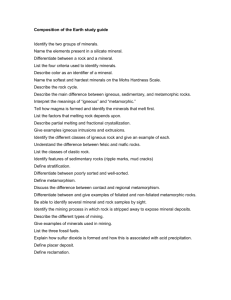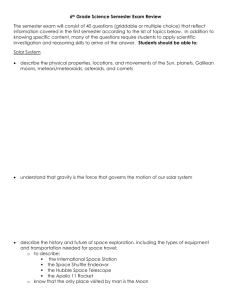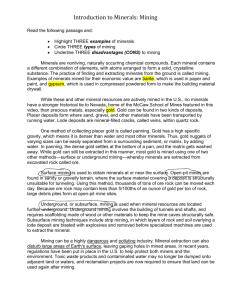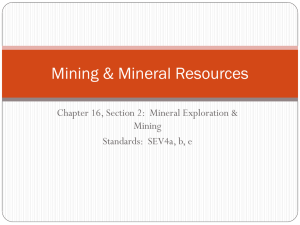The asthenosphere is a relatively thin plastic
advertisement
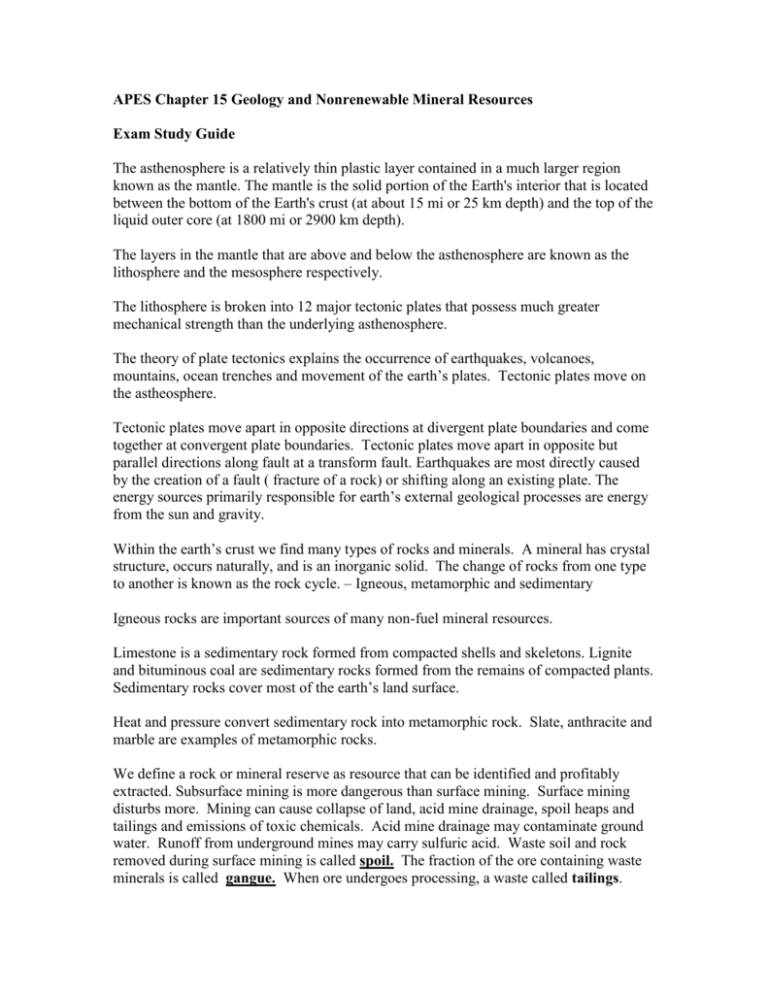
APES Chapter 15 Geology and Nonrenewable Mineral Resources Exam Study Guide The asthenosphere is a relatively thin plastic layer contained in a much larger region known as the mantle. The mantle is the solid portion of the Earth's interior that is located between the bottom of the Earth's crust (at about 15 mi or 25 km depth) and the top of the liquid outer core (at 1800 mi or 2900 km depth). The layers in the mantle that are above and below the asthenosphere are known as the lithosphere and the mesosphere respectively. The lithosphere is broken into 12 major tectonic plates that possess much greater mechanical strength than the underlying asthenosphere. The theory of plate tectonics explains the occurrence of earthquakes, volcanoes, mountains, ocean trenches and movement of the earth’s plates. Tectonic plates move on the astheosphere. Tectonic plates move apart in opposite directions at divergent plate boundaries and come together at convergent plate boundaries. Tectonic plates move apart in opposite but parallel directions along fault at a transform fault. Earthquakes are most directly caused by the creation of a fault ( fracture of a rock) or shifting along an existing plate. The energy sources primarily responsible for earth’s external geological processes are energy from the sun and gravity. Within the earth’s crust we find many types of rocks and minerals. A mineral has crystal structure, occurs naturally, and is an inorganic solid. The change of rocks from one type to another is known as the rock cycle. – Igneous, metamorphic and sedimentary Igneous rocks are important sources of many non-fuel mineral resources. Limestone is a sedimentary rock formed from compacted shells and skeletons. Lignite and bituminous coal are sedimentary rocks formed from the remains of compacted plants. Sedimentary rocks cover most of the earth’s land surface. Heat and pressure convert sedimentary rock into metamorphic rock. Slate, anthracite and marble are examples of metamorphic rocks. We define a rock or mineral reserve as resource that can be identified and profitably extracted. Subsurface mining is more dangerous than surface mining. Surface mining disturbs more. Mining can cause collapse of land, acid mine drainage, spoil heaps and tailings and emissions of toxic chemicals. Acid mine drainage may contaminate ground water. Runoff from underground mines may carry sulfuric acid. Waste soil and rock removed during surface mining is called spoil. The fraction of the ore containing waste minerals is called gangue. When ore undergoes processing, a waste called tailings. Smelters ( melting or baking) of the ore give off soot, lead, and sulfur dioxide. Environmental impact is the greatest mining for low-grade ore. What is a low-grade ore? What is a high grade ore? Some examples of economically valuable minerals and their use in our society. The U.S. Mining Law of 1872 and revision to the -makes companies responsible for restoring the land. -requires mining companies to pay 12.5% royalty on any hard-rock minerals they extract. - make mining companies pay for environmental clean-ups resulting from mining activities. - make companies pay for damage resulting from mining activities. Nodules of manganese are found on the floor of the deep ocean. These manganese rich nodules are an attractive resource because they often contain several other economically valuable minerals. When a resource has been economically depleted we can 1. recycle or reuse what has already been extracted. 2. cut down on unnecessary waste of the resource. 3. find a substitution 4. just do without it Depletion time is the time it takes to use up about 80% of the mineral reserves at a given rate. A depletion curve is typically used to project the depletion time for a resource. One of three objective questions. 1. Describe how mineral resources can be used more sustainably. Summarize the nanotechnology revolution and its implications. 2. Distinguish between internal and external geologic processes. Discuss how these processes affect human activities and natural ecosystems. 3. Describe the economics of nonrenewable minerals. Explain the limitations of mining lower-grade ores. Discuss the option of getting more minerals from the ocean. Free Response Question If you have read your objective questions and use study guide to prepare for the exam you will be able to answer the free response question. If there is something in the study guide that you don’t understand then be sure to use your book to clarify the concept.

